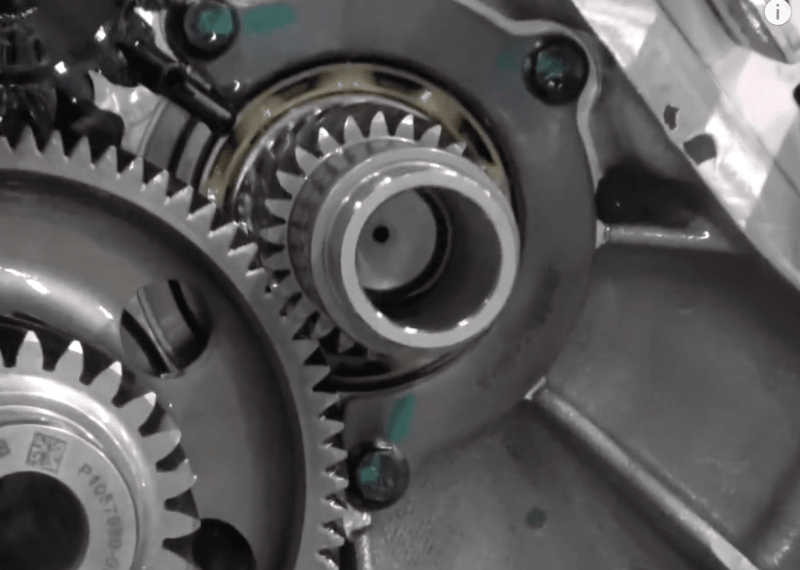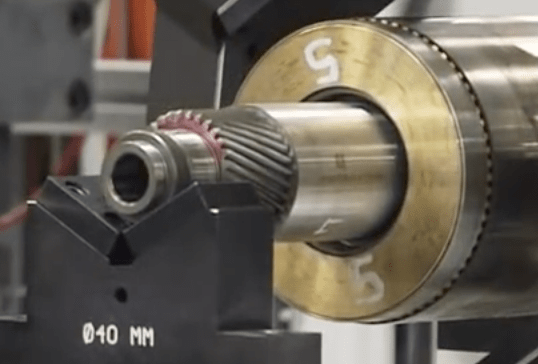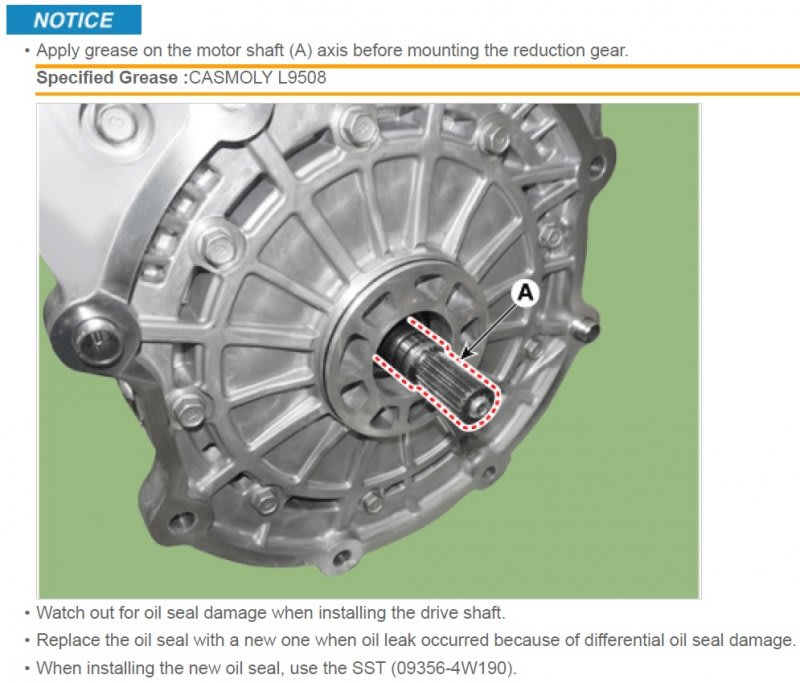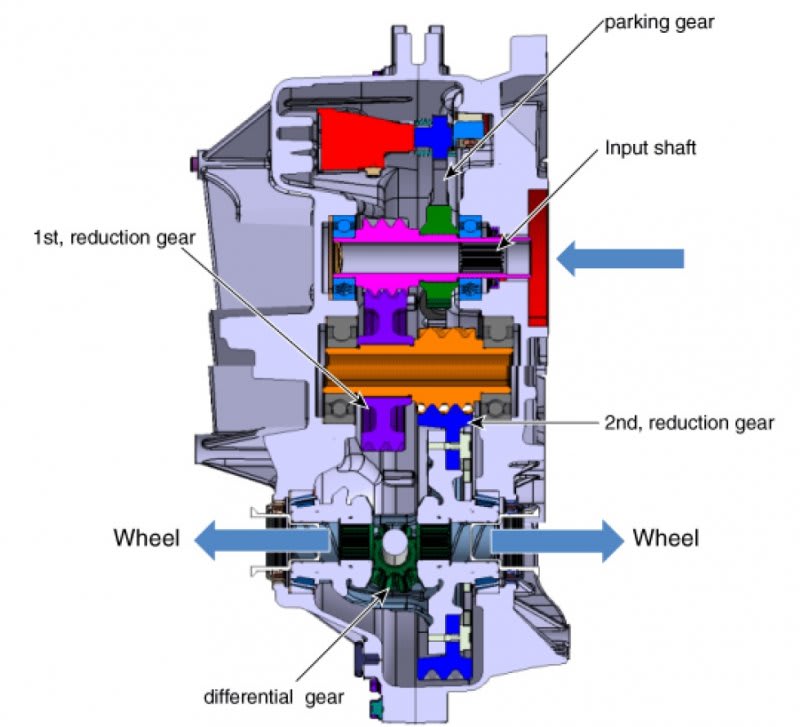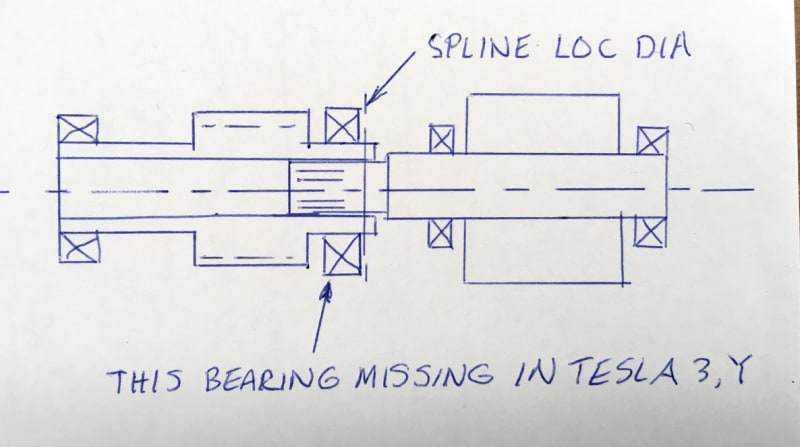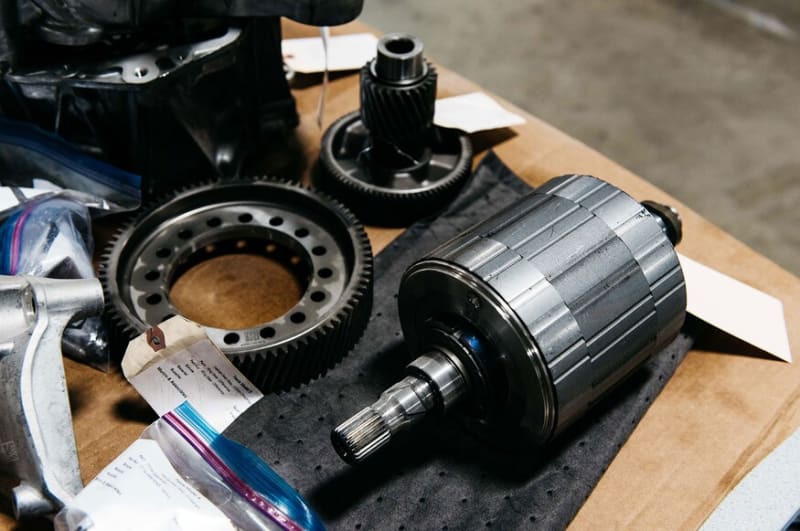KiwiME
Mechanical
- Sep 29, 2003
- 55
Hello,
I'm noting several different approaches to the above detail used on production EVs. The context of my question is that a handful of near-new e-Niro and Kona Electric examples have developed clicking noises reportedly at approx motor shaft frequency. The manufacturers don't seem to have a field solution to this yet, as best as I know, despite replacing both motors and gearboxes. I'm wondering if there is a fundamental flaw in their design related to coupling two fully-constrained rotating shafts which may have small parallel offset errors due to production and mounting tolerances. I'm also wondering how splines outside of oil-wet areas would be lubricated, whether grease is sufficient.
Here's what I have found on several EV designs.
GM EV1: The rotor (induction motor) and pinion are mounted on a single shaft with a bearing at each end. Between them is only an oil seal.
GM Bolt: The pinion is held by a large nut onto the end of the (PM) motor shaft. There is no outrigger bearing.
Nissan Leaf: The motor (PM) has a splined shaft output. The reduction pinion (and parking pawl wheel) is supported at both ends by bearings. The detail of the motor's male and pinion's female splines is not clear.
Hyundai Kona, Kia e-Niro: Not much info is available but the (PM) motor has a splined output shaft like the Leaf. The design detail of that spline and design of the reduction gearbox internals are all unknown. These two vehicles reportedly use the same motor and reduction gearbox but the overall gear ratio is slightly different.
Any insight is appreciated.
thanks,
Paul
I'm noting several different approaches to the above detail used on production EVs. The context of my question is that a handful of near-new e-Niro and Kona Electric examples have developed clicking noises reportedly at approx motor shaft frequency. The manufacturers don't seem to have a field solution to this yet, as best as I know, despite replacing both motors and gearboxes. I'm wondering if there is a fundamental flaw in their design related to coupling two fully-constrained rotating shafts which may have small parallel offset errors due to production and mounting tolerances. I'm also wondering how splines outside of oil-wet areas would be lubricated, whether grease is sufficient.
Here's what I have found on several EV designs.
GM EV1: The rotor (induction motor) and pinion are mounted on a single shaft with a bearing at each end. Between them is only an oil seal.
GM Bolt: The pinion is held by a large nut onto the end of the (PM) motor shaft. There is no outrigger bearing.
Nissan Leaf: The motor (PM) has a splined shaft output. The reduction pinion (and parking pawl wheel) is supported at both ends by bearings. The detail of the motor's male and pinion's female splines is not clear.
Hyundai Kona, Kia e-Niro: Not much info is available but the (PM) motor has a splined output shaft like the Leaf. The design detail of that spline and design of the reduction gearbox internals are all unknown. These two vehicles reportedly use the same motor and reduction gearbox but the overall gear ratio is slightly different.
Any insight is appreciated.
thanks,
Paul

